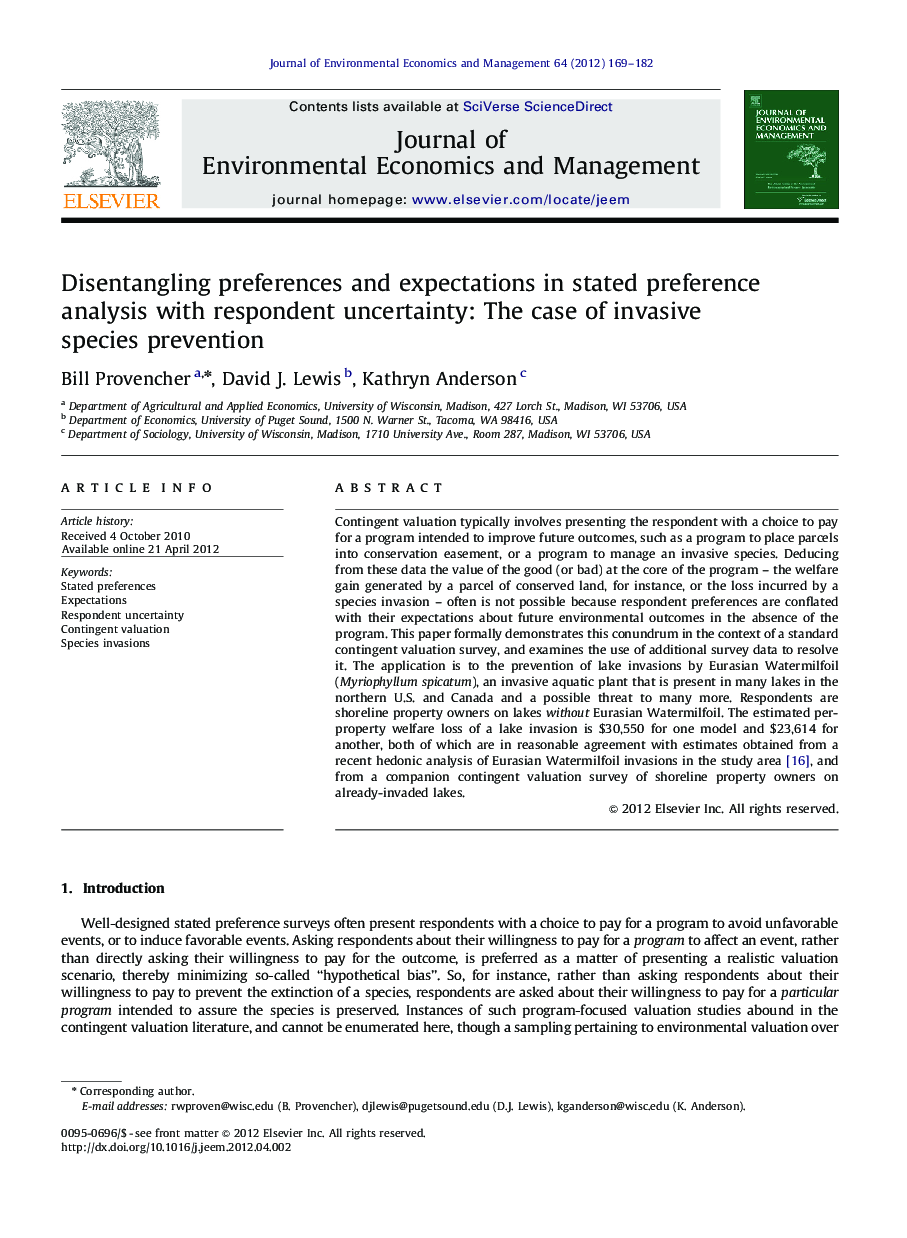| کد مقاله | کد نشریه | سال انتشار | مقاله انگلیسی | نسخه تمام متن |
|---|---|---|---|---|
| 958998 | 929107 | 2012 | 14 صفحه PDF | دانلود رایگان |

Contingent valuation typically involves presenting the respondent with a choice to pay for a program intended to improve future outcomes, such as a program to place parcels into conservation easement, or a program to manage an invasive species. Deducing from these data the value of the good (or bad) at the core of the program – the welfare gain generated by a parcel of conserved land, for instance, or the loss incurred by a species invasion – often is not possible because respondent preferences are conflated with their expectations about future environmental outcomes in the absence of the program. This paper formally demonstrates this conundrum in the context of a standard contingent valuation survey, and examines the use of additional survey data to resolve it. The application is to the prevention of lake invasions by Eurasian Watermilfoil (Myriophyllum spicatum), an invasive aquatic plant that is present in many lakes in the northern U.S. and Canada and a possible threat to many more. Respondents are shoreline property owners on lakes without Eurasian Watermilfoil. The estimated per-property welfare loss of a lake invasion is $30,550 for one model and $23,614 for another, both of which are in reasonable agreement with estimates obtained from a recent hedonic analysis of Eurasian Watermilfoil invasions in the study area [16], and from a companion contingent valuation survey of shoreline property owners on already-invaded lakes.
Journal: Journal of Environmental Economics and Management - Volume 64, Issue 2, September 2012, Pages 169–182